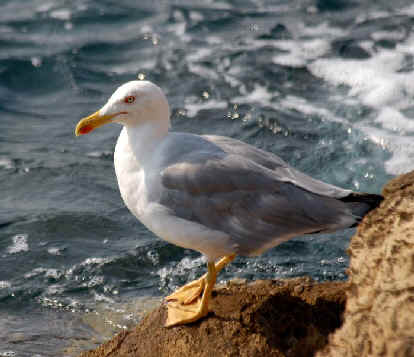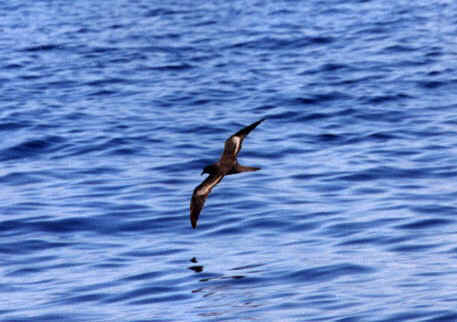
E-mail: font@focusonnature.com
Phone: Toll-free in USA 1-800-721-9986
or 302/529-1876
Website: www.focusonnature.com
 |
PO Box 9021,
Wilmington, DE 19809, USA E-mail: font@focusonnature.com Phone: Toll-free in USA 1-800-721-9986 or 302/529-1876 Website: www.focusonnature.com |
A
Focus On Nature Tour
in
the
Canary
Islands
For Birds and Other Nature
On the
islands of
Lanzarote, Fuerteventura,
La Gomera, and Tenerife
Where the habitats are diverse,
and the birding interesting, to say the least!
July 1-6, 2012
(tour:
FON/SP-3 '12)
This
tour follows
tours FON/SP-1 & 2 in Spain
Tour to be led by Armas Hill.
Links:
Birds during previous FONT tours in Spain (including the Canary Islands)
A List & Photo Gallery of European Birds, in 2 Parts:
Part #1, Grouse to Puffin
Part #2, Sandgrouse to
Buntings
Butterflies of the Canary Islands
Amphibians & Reptiles of the Canary Islands
Mammals & Marine Life of the Canary Islands
Interesting Plants of the Canary Islands

The Yellow-legged Gull
is very common in the Canary Islands.
(photo by Howard Eskin)
Itinerary:
Sun, July 1:
The flight from Madrid to
Lanzarote, arriving
on the first of the Canary Islands, to be
visited.
For those coming from tour FON/SP-2, the flight will be from Barcelona to
Lanzarote.
After our first birding on Lanzarote, a truly fascinating place. Only about
80 miles offshore from Morocco, it's a volcanic island. Its blackened
earth alternates with vineyards and plantings of melons and figs. The plowing of
the limited arable land has been done with the aid of Dromedaries,
one-humped camels that have been the island's typical beast of burden.
Flat-roofed all-white houses, in scattered small villages, stand out in stark
contrast to the dark terrain of the land. Along the coast, the hulls of fishing
boats are also white.
As to the volcanoes, there are 36 of them, within a triangle of 5 square miles.
Not far from the "Mountain of Fire", there's
a coastal lagoon and salt pans. At the north end of the island there are high
cliffs. Some wonderful birds and plants occur at the places. Some of the rare
plants are endemic, being found nowhere else in the world. Mammals that
we've seen previously on Lanzarote, in addition to the introduced Dromedary,
include the Canarian Shrew and Algerian Hedgehog.
Birds that we've seen on the island have included: Eleonora's Falcon and Bulwer's
Petrel at the cliffs, Houbara Bustard in an area of dunes, and Barbary
Partridges by the greens of an out-of-place golf course!
This would be the first of 2 nights for us on Lanzarote.
Mon, July 2:
This day, we'll do an early-morning ferry crossing to the nearby Canarian island
of Fuerteventura. There's a bird on that
island that occurs nowhere else in the world: the Canary Islands Bush Chat.
That, and other birds, will be objectives, with the other birds including the Cream-colored
Courser, Eurasian Stone Curlew, Egyptian Vulture, Ruddy Shelduck, and
Trumpeter Finch.
Late in the day, we'll cross on the ferry again back to
Lanzarote. During the crossings, seabirds should be seen,
including a large number of Cory's Shearwaters. Overnight again on
Lanzarote.
Tue, July 3:
After some more birding, in the morning, on Lanzarote, we'll take a short flight
to Tenerife, a Canarian island that will be
completely different than the first two island we've visited.
To begin with, Tenerife is green. There are forests of various kinds, including
those of laurel and pine. And there's a very high mountain, actually the highest
in Spain (as the Canary Islands are part of Spain). the peak reaches
about 12,000 feet above sea level, and the sea is not far from it.
On Tenerife, there are a number of species and subspecies of birds that are
endemic to the Canary Islands. Including the bird known as the
"Canary". That wild ancestor of the cage-birds is now called the
Atlantic Canary.
Also on Tenerife, among the endemic bird species, there's the Blue Chaffinch,
and the Canary Islands Chiffchaff. In the pines, there's also the Canary
Islands Goldcrest, and also an endemic subspecies of the African Blue
Tit.
On the ground, there are numerous wildflowers and other plants of
interest.
A tree, very much of interest, will be the laurel, an arboreal relic of another
age. A reason for our interest is that we'll be visiting the laurel forest, for
2 endemic
species of pigeon: one, the Laurel Pigeon, the other,
the Bolle's Pigeon. Both of those bird species are relicts from pre-historic times. The
first of 3 overnights on Tenerife.

A Bulwer's
Petrel between islands in the Canaries.
Wed July 4:
A full-day of birding, including "pelagic trips" by ferry, to and from
the
island of La Gomera. During each
of the two 1½ hour ferry crossings, there will be the opportunity to view the seabirds
of the Canarian waters, including Bulwer's Petrel and
Macaronesian (formerly part of the
Little)
Shearwater.
Pilot Whales and dolphins also
occur. Later in the day, there will be more landbirding, and botanizing,
for those who wish, on Tenerife, where again we'll spend the night.
Thu, July 5:
More birding and exploring on Tenerife,
for birds we may not have seen yet, or those we may want to see again. One bird
we'll certainly aim to see the Barbary Falcon at a high cliff by the sea.
That raptor can be incredible to watch as it either swoops or otherwise flies as
so very quickly as it often does. Our last overnight on Tenerife.

The Eleonora's Falcon
is one of 2 species of falcons
that we've seen during FONT tours
in the Canary Islands.
The other is the Barbary Falcon.
Both are spectacular birds.
This photo is of a young Eleonora's.
Fri, July 6:
Flight from Tenerife to
Madrid, connecting with flights departing from Spain. Arrival
back in North America the same day.
Price, in US dollars, based on double occupancy:
| $1,995 Single supplement: $295 |
Price includes:
All overnight accommodations and land transportation within the Canary Islands. Most meals (breakfasts and lunches).
Price does not include:
Dinners.
Drinks and other items of
a personal nature.
Flights to/from, or within, Spain
& the Canary Islands.
A deposit of
$500 will assure a
place on the tour.
![]()
Some
general information about islands to be visited:
During our tour in the Canaries, 4 of the 7 main islands of the archipelago will be visited: those known as Tenerife, Gomera, Fuerteventura, and Lanzarote. Each island is very different from the others.
On each island, in addition to the birdlife, there are other aspects of nature that are quite interesting.
At sea level, the island of Tenerife has a rocky shoreline. But it also has a peak way above the sea: El Teide, at 12,160 feet, not only the highest in the Canary Islands, but the highest in Spain. At El Fraile, on the northern cliffs, there is one of the richest botantical assemblages to be found - 300 species of flowering plants in just a few hectares.
Gomera Island can only be approached by sea - by ferry. There's a steady stream of clouds over the island's peaks, often keeping them from view. Beneath the moisture-laden clouds, there is some of Spain's most luxuriant vegetation.
In contrast, the dry island
of Fuerteventura is the closest of the Canaries to
Africa. On the island, the dunes and the Jandia Peninsula are
very interesting botanically, with a number of rare and endemic
species of plants. Of particular interest is the blue-flowered
viper's bugloss. and there's a succulent spurge species,
resembling a red-flowered spiny cactus.
The island of Lanzarote is also dry. Just north of Fuerteventura, Lanzarote is
perhaps the most exotic of the Canary Islands. Much (although not all) of
it is a "desert" of black volcanic ash. Parts of it are treeless -
like a lunar landscape.
The more than 30 volcanoes add color to the scene: one of them is yellow,
another is red while the ground is black or a burnt sienna. The shadows of the
deepest craters are an intense purple. The craters themselves glow with
iridescent light and glittering hues of pastels ochres, and blues created by
particles of iron. Those 30-plus volcanic cones, just described, are in a
limited area of only 5 square miles.
Also of interest on Lanzarote are rare & endemic plants, and caves inhabited
by a creature (a crab) found nowhere else in the world, and yes, some
interesting birds of the desert and seaside
cliffs.